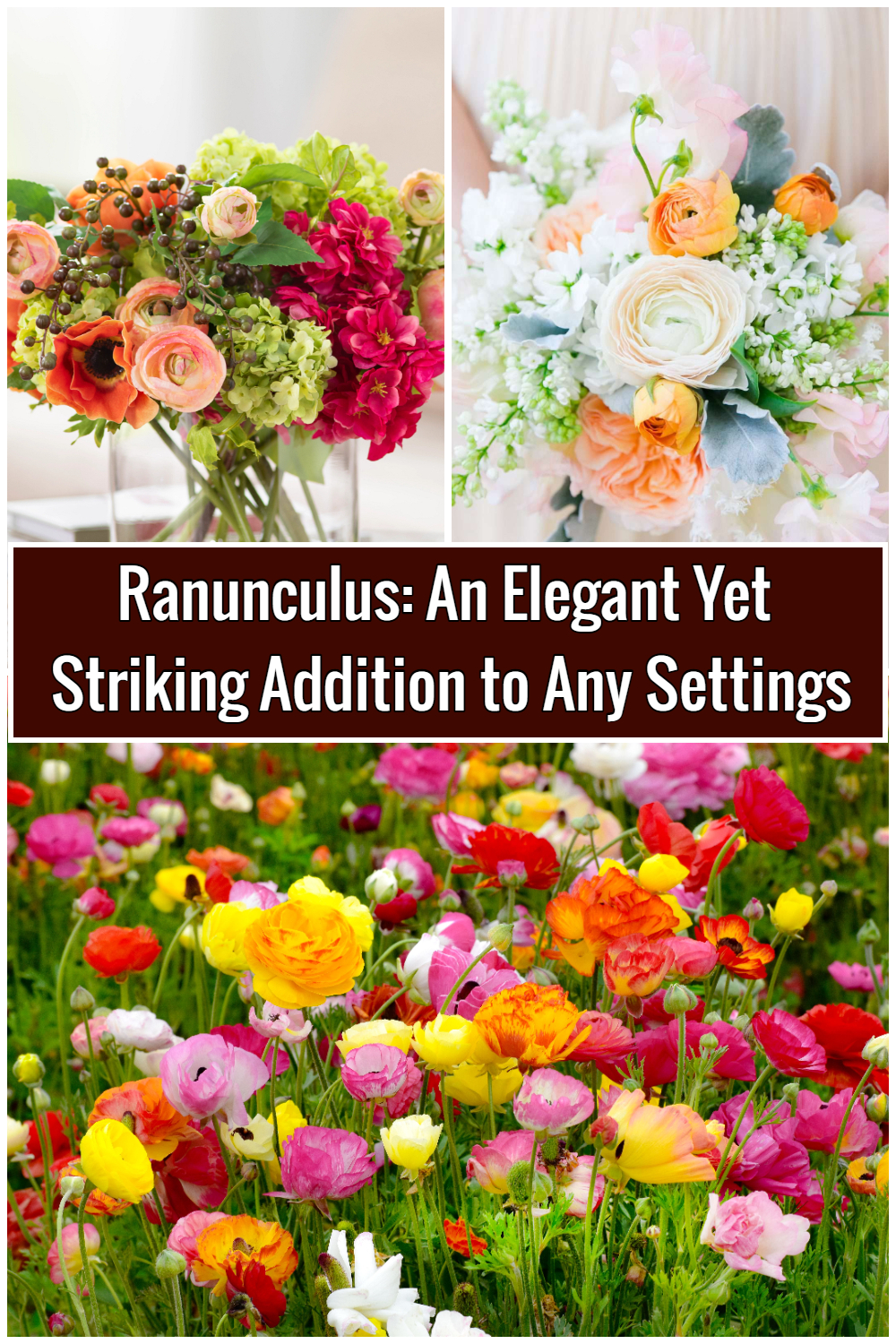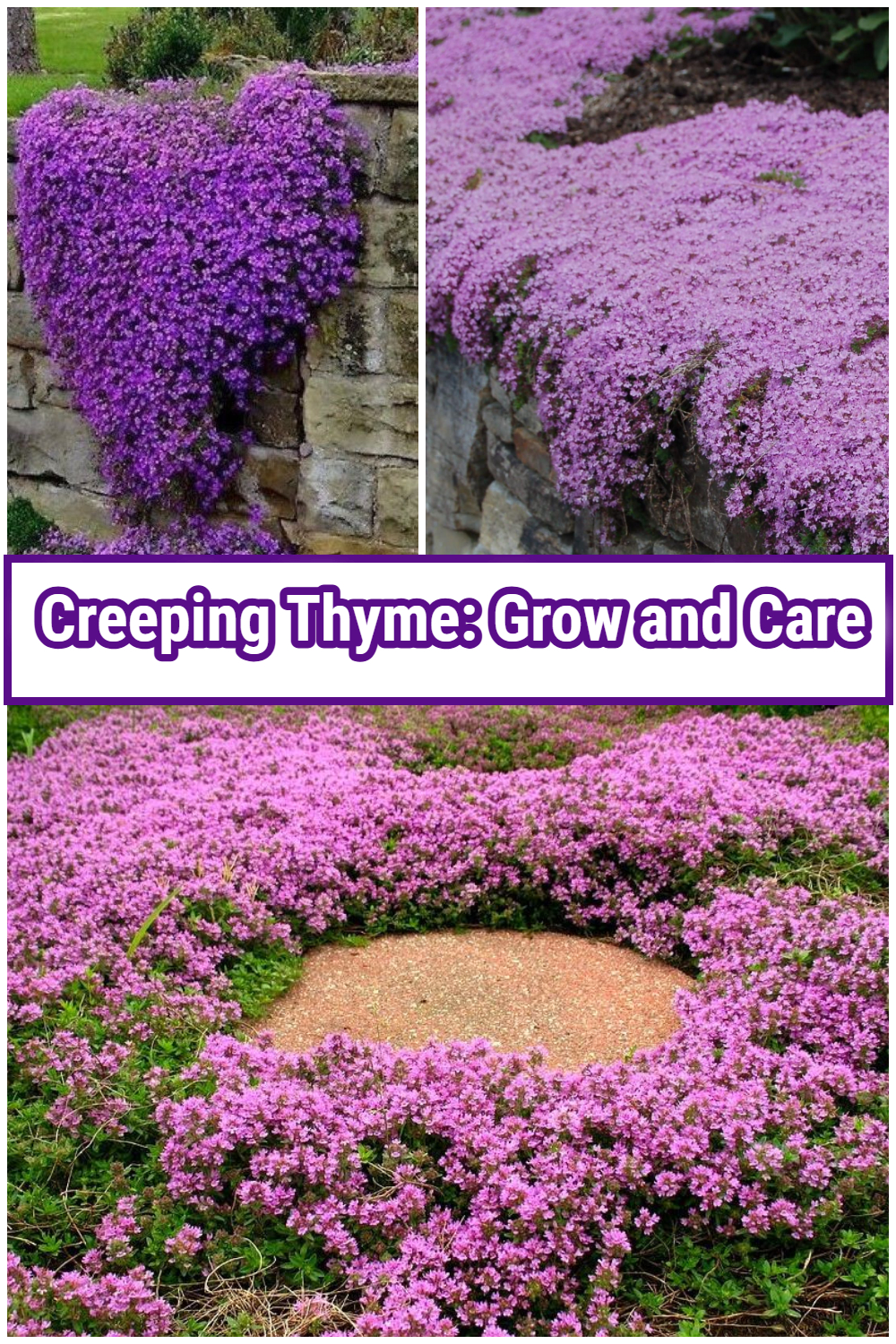Commonly known as the Persian Buttercup, Ranunculus is a stunning flower admired for its layered, rose-like petals and vibrant hues. It has become a favorite among gardeners, florists, and flower enthusiasts for centuries.
Whether used in gardens, floral arrangements, or wedding bouquets, Ranunculus’ lush, rose-like blossoms, and striking colors offer a touch of elegance and charm to any setting.
Description and Characteristics
Ranunculus flowers have gained a reputation in the world of flowers for their numerous, tissue-thin petals that form intricate, cup-shaped, or rose-like blooms. They come in various colors including white, yellow, pink, red, orange, and purple. These flowers typically grow between 12 to 18 inches tall, with thin, green stems and finely cut leaves.
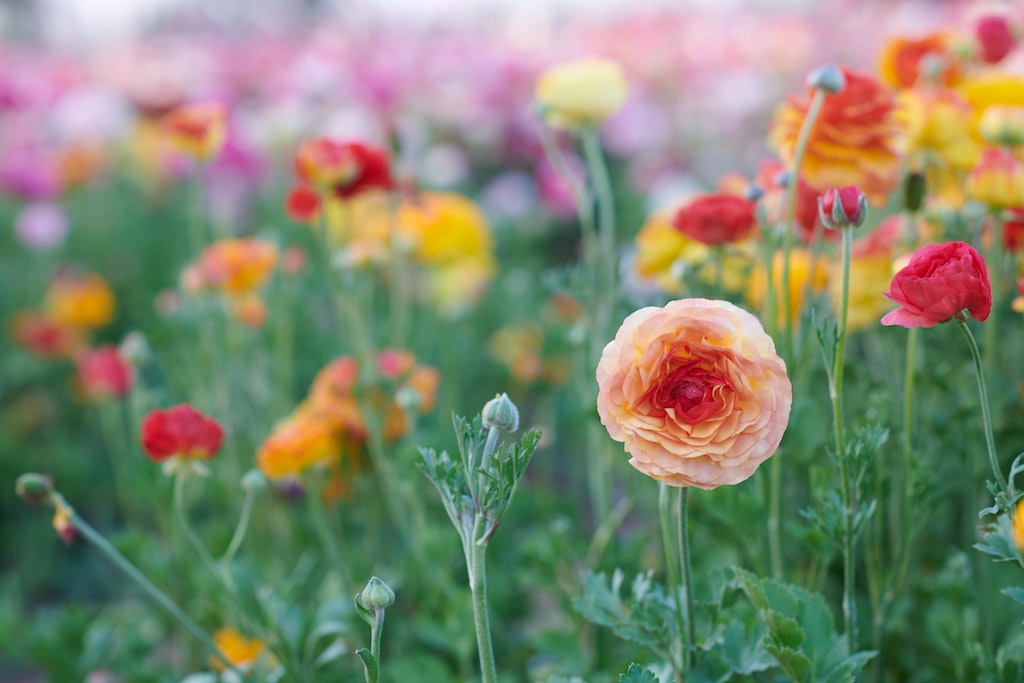
Ranunculus belongs to the Ranunculaceae family, which includes buttercups, delphiniums, and anemones. Among them, Ranunculus asiaticus (Persian Buttercup) is the most sought-after species. It is highly cherished for its large, multi-petaled flowers that bloom gorgeously in spring and early summer.
Growing Conditions and Care
Ranunculus is a relatively easy-to-grow plant and requires the right conditions to thrive. Here’s how to take care of these beautiful blooms:
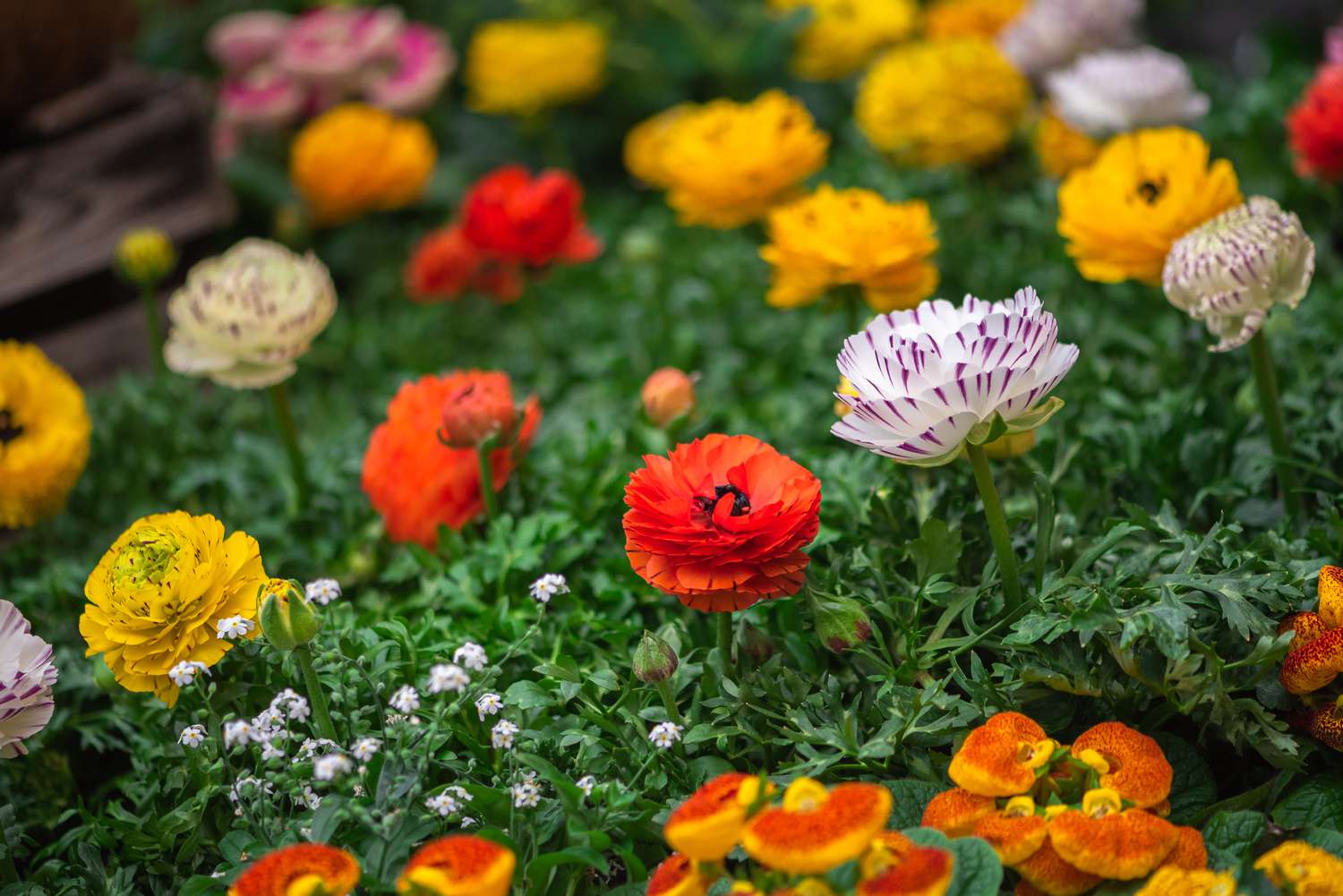
1. Climate and Soil Requirements
Ranunculus flowers prefer cool weather and grow well in temperate climates. They requires well-draining soil whose ideal soil pH is between 6.0 and 7.0 and is rich in organic matter.
2. Sunlight and Watering
The Elegant Persian Buttercup thrives best in full sun at least 6 hours of direct sunlight per day). Water the plant moderately, keeping the soil evenly moist but not soggy. Overwatering can lead to root rot, so ensure proper drainage.
3. Planting Ranunculus
You can grown from bulbs (corms) or seeds. Plant the bulbs in the fall (in mild climates) or late winter (in colder regions) for spring blooms. You should space corms 6 to 8 inches apart with the clawed side facing downward. The germination process usually takes between 2 to 3 weeks, depending on the temperature conditions.
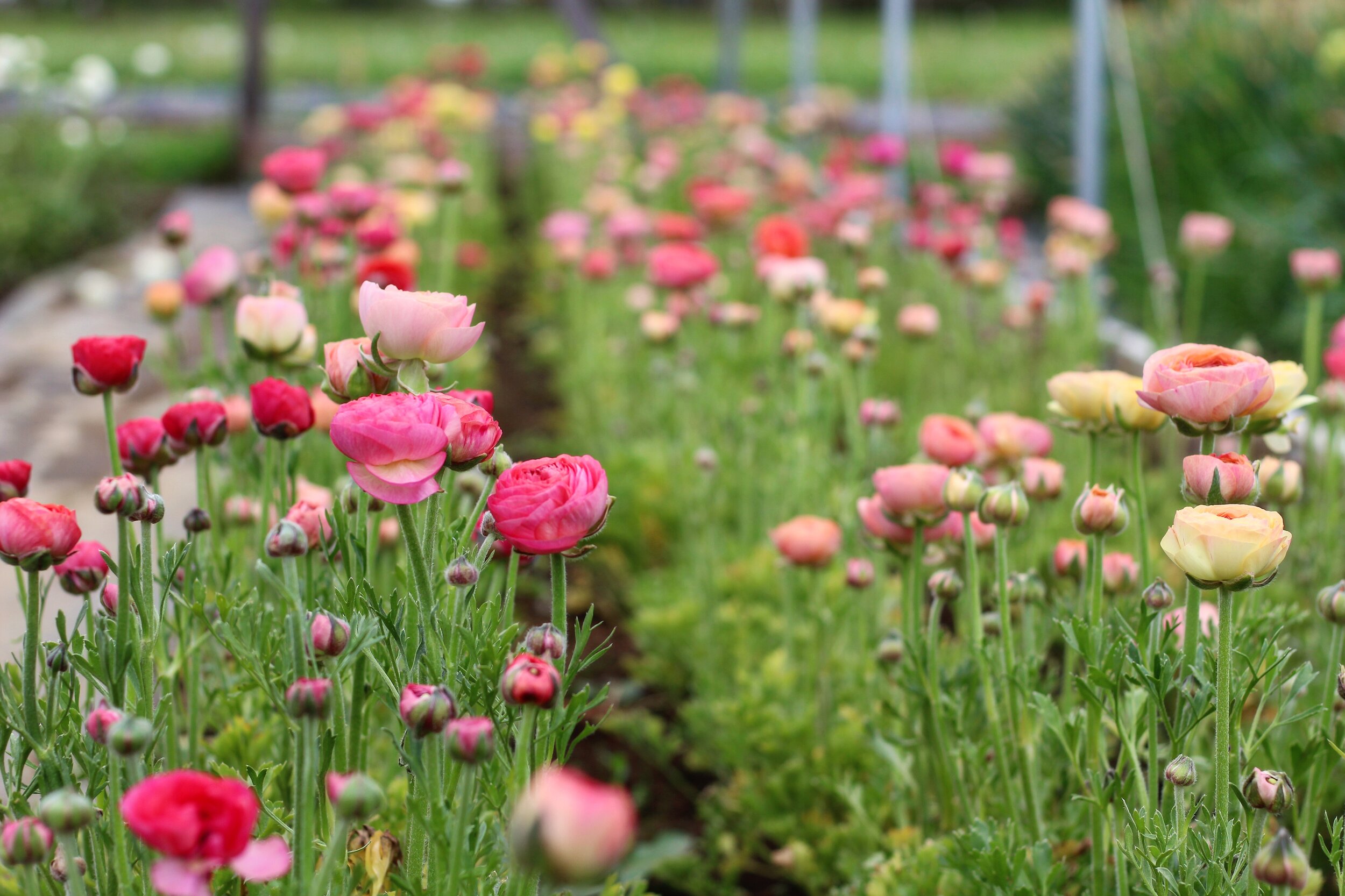
4. Pests and Diseases
Ranunculus is generally resistant to many pests but may attract aphids or snails. Overwatering can cause root rot and fungal diseases.
Uses and Symbolism
Ranunculus is admired for its versatility and elegance, making it a striking addition to lush gardens, stylish floral arrangements, or romantic wedding bouquets.
Symbolic Meanings:
Charm and radiance – Ranunculus is often associated with admiration and attraction.
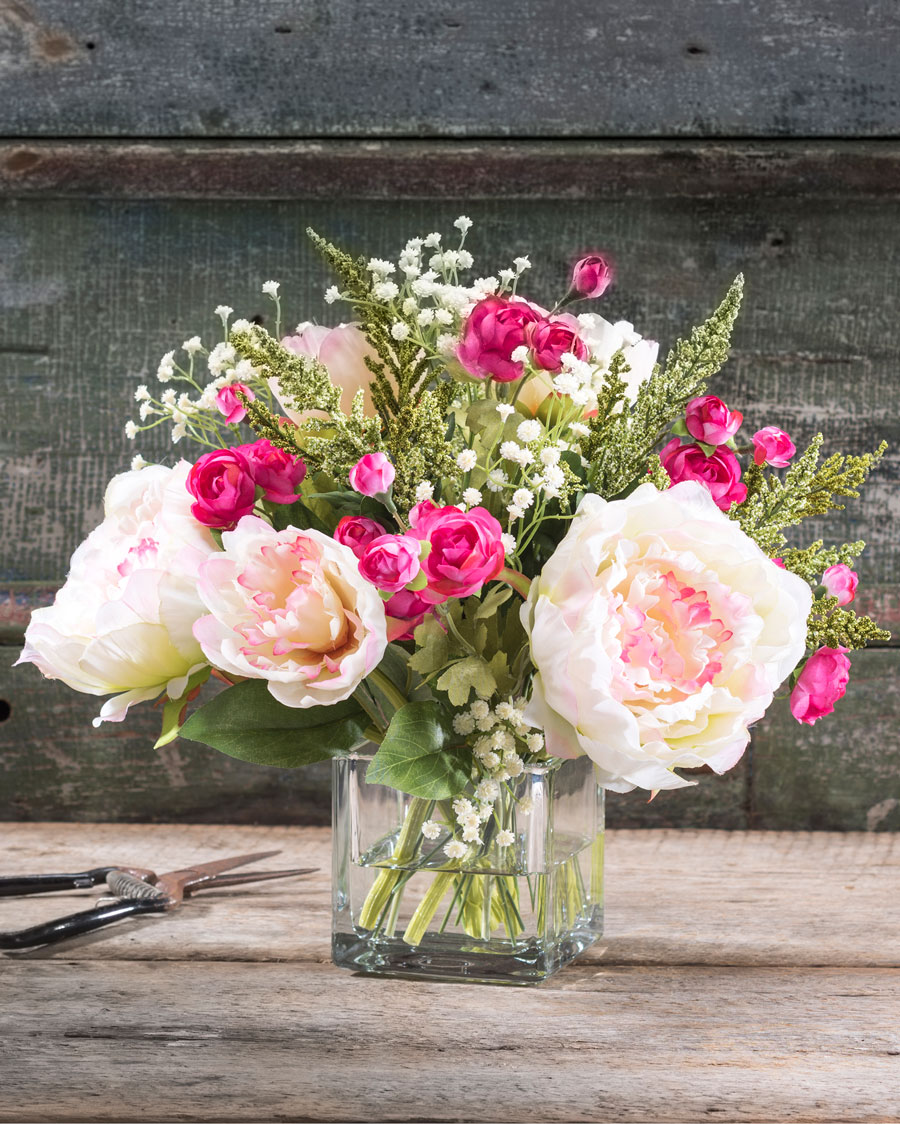
Admiration and appreciation – Ranunculus makes a meaningful gift symbolizing gratitude.
New beginnings – Ranunculus is a popular choice for springtime decorations and celebrations.
Popular Varieties
Along with the stunning Ranunculus asiaticus, there are several other varieties worth noting:
Ranunculus acris (Meadow Buttercup) – Commonly found in meadows and grasslands, this wild species offers bright yellow blooms.
Ranunculus repens (Creeping Buttercup – It’s a low-growing species that spreads across the ground, blooming in vibrant yellow flowers.
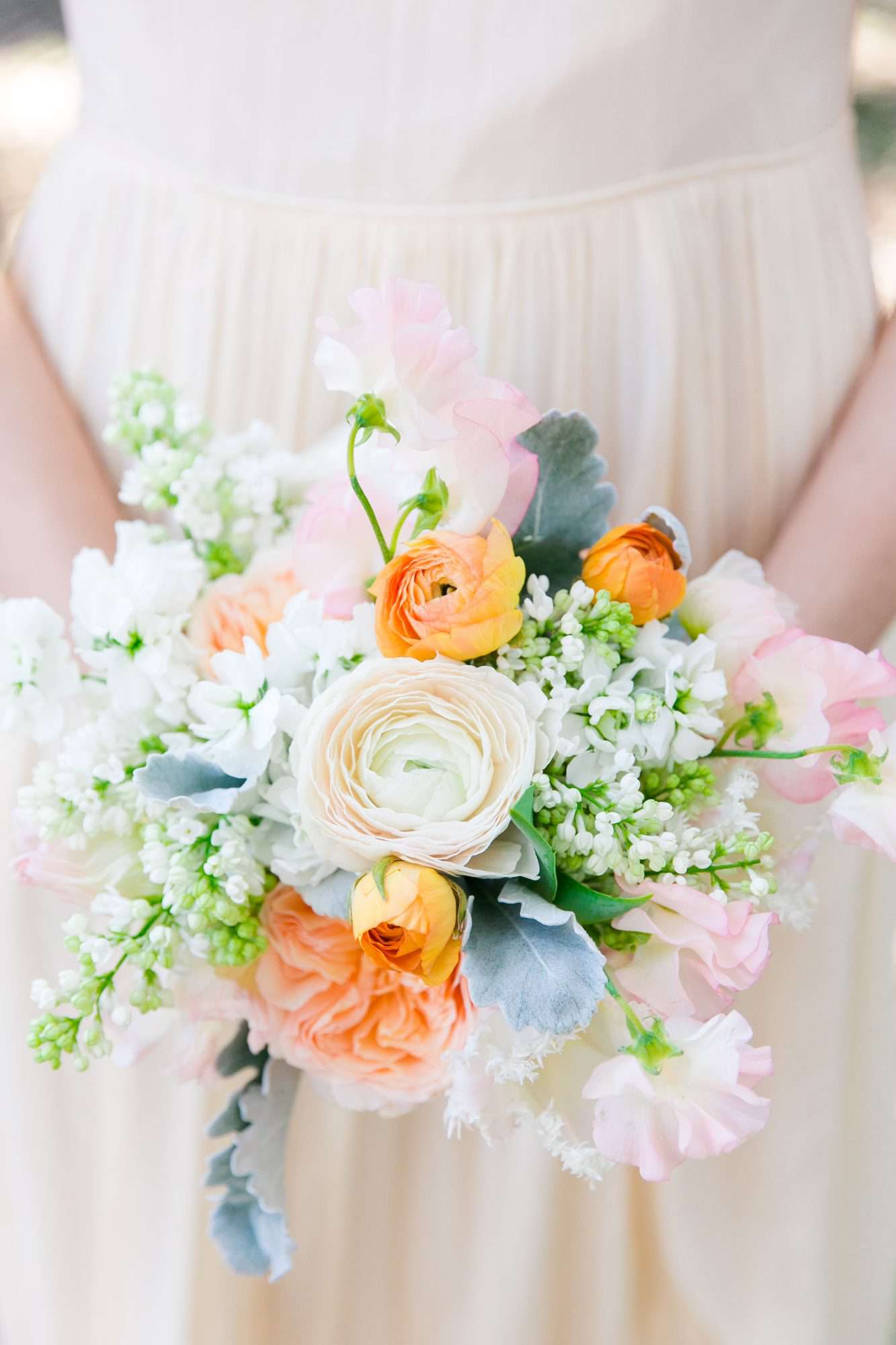
Ranunculus lyallii (Mount Cook Lily) –This variety is native to New Zealand and features large white flowers.
Conclusion
With its delicate yet striking appearance, Ranunculus adds elegance to any setting. Easy to grow and stunning in arrangements, it’s a perfect choice for both seasoned gardeners and beginners looking for an elegant addition to their home or garden. Whether planted in gardens or used in floral designs, Ranunculus certainly brightens up any space with its graceful and vibrant presence.
